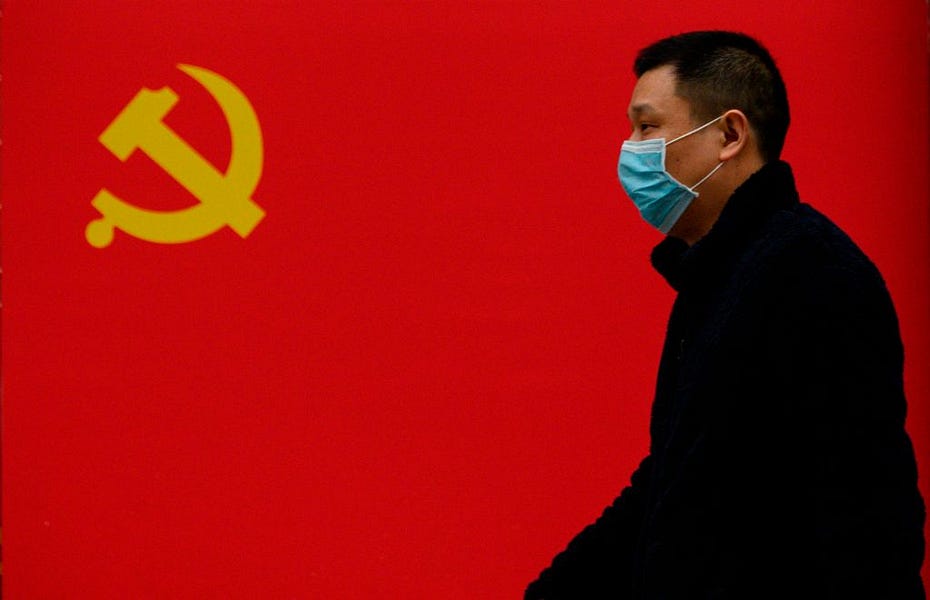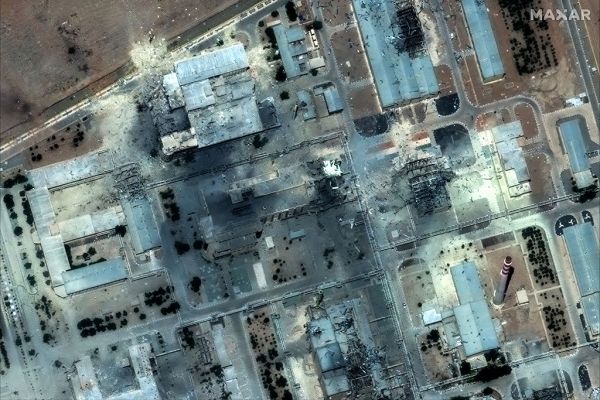As the number of confirmed cases of COVID-19 rises quickly in the United States and in many other countries around the world, the official number of new cases in China, the source of the pandemic, has fallen dramatically. Given the record of secrecy, duplicity, and coverup by the Communist government of China, there is little cause to take those official figures at anything close to face value. Nevertheless, Western media organizations, the World Health Organization, and the United Nations have taken to referring to China’s numbers as “confirmed cases” comparable to cases in other countries with more open societies and transparent governments, giving the impression that China has largely conquered the virus.
The Chinese government department responsible for tracking statistics during the crisis is the National Health Commission of the People’s Republic of China. The commission’s website has been publishing daily updates since late January. From the first report on January 25, the number of cases of the now-named COVID-19 virus skyrocketed from 1,287 to 17,205 in just over a week. At that point, according to the commission, 189,583 people had “been identified as having had close contact with infected patients.”
On top of this, the commission acknowledged on January 26 that “More than 5 million people have left Wuhan due to the Spring Festival and epidemic[.]” From all appearances, the “epidemic” was poised to sweep the nation of 1.3 billion people, exacerbated by the timing: an annual festival that typically generates nearly 3 billion trips, the “largest annual human migration in the world.”
Against all odds, however, the National Health Commission of China, a little more than six weeks later, reported no new domestically acquired cases, attributing every new case as “imported” by those returning to China. Over the last half of March, despite the massive dispersion of Chinese citizens from the epicenter of the virus, Wuhan, the commission has reported barely one new domestically acquired case per day. While in mid-March, 683,281 people had “been identified as having had close contact with infected patients” with “9,144 are now under medical observation,” new cases remained a trickle.
Despite compelling reasons for incredulity at China’s official figures, on March 16, the United Nations published an article titled “China shows COVID-19 Coronavirus can be ‘stopped in its tracks.’” The article is based on an interview with a “WHO Representative in the country, Dr. Gauden Galea.”
“It is an epidemic that has been nipped as it was growing and stopped in its tracks. This is very clear from the data that we have, as well as the observations that we can see in society in general,” he told UN News in Beijing on Saturday.
But based on the same article, Dr. Galea has been in Beijing during the course of China’s battle with COVID-19, except for a quick trip to Wuhan on January 21-22 before the city was even locked down and the outbreak was still muted. The U.N. article goes on to say: “At the time, there was no overwhelming demand on the health services, though the situation had changed when Chinese and international health experts conducted a joint mission a month later.” A “joint mission,” indicating that the Chinese government would have maintained its control over WHO’s access to data and physical sites.
Various media organizations have similarly relied on China’s numbers for some pretty dramatic headlines. On March 18, the New York Times declared: “China Hits a Coronavirus Milestone: No New Local Infections.” While the article notes in passing that Chinese “officials initially concealed and mismanaged the outbreak,” it goes on to flatly assert that “Beijing’s sledgehammer approach … worked to quickly lower the number of infections[.]” Axios headlined a similar report “No new coronavirus cases in Wuhan, China, where global pandemic began,” while NPR went with ”China Reports No New Domestic Cases, But Battles Coronavirus Imported From Abroad.”
Eight days later, the Times, again based on China’s “confirmed” numbers, told the world that, “The U.S. Now Leads the World in Confirmed Coronavirus Cases.” While the article says that “The Times is engaged in a comprehensive effort to track the details of every confirmed case in the United States, collecting information from federal, state and local officials,” apparently the Times applied considerably less rigor to acquire information on China.
On Monday, however, came news that China’s numbers have indeed been incomplete. The Wall Street Journal reported that “China said more than 1,500 people who were infected with the virus but haven’t shown symptoms weren’t included in its national tally of confirmed cases.” While other countries are struggling to keep up with statistics on cases, the change so late in China’s experience with the virus raises further questions about China’s transparency, especially in light of some of the drastic measures the Communist government took early on to hush up the extent and seriousness of the epidemic.
If the past is any indication, the Chinese government will continue to hide the true consequences of the COVID-19 outbreak in that country as best it can. But the media and international health authorities would do well to view any data coming out of China with a more skeptical eye.
Photograph by Noel Celis/AFP/Getty Images.






Please note that we at The Dispatch hold ourselves, our work, and our commenters to a higher standard than other places on the internet. We welcome comments that foster genuine debate or discussion—including comments critical of us or our work—but responses that include ad hominem attacks on fellow Dispatch members or are intended to stoke fear and anger may be moderated.
With your membership, you only have the ability to comment on The Morning Dispatch articles. Consider upgrading to join the conversation everywhere.